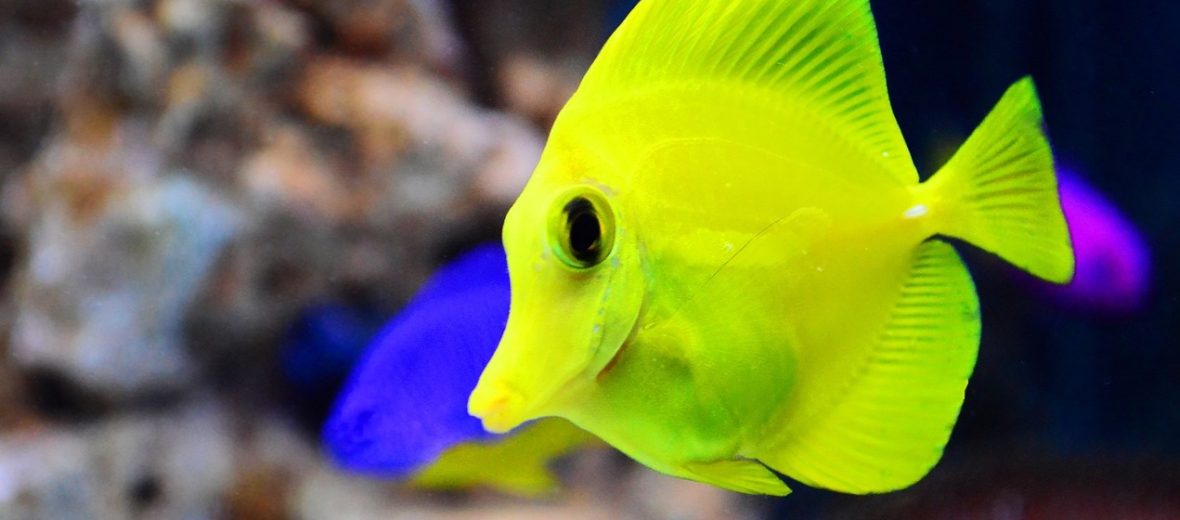
The yellow tang, a member of the surgeonfish family, can be found among the reef ecosystems, from 3 – 151 feet deep, in the Pacific Ocean. More specifically in the reefs of Marcus, Mariana, Marshall, Ryukyu, Wake, and the Hawaiian islands. They prefer warmer, shallow waters. Even though they are sometimes collected for the fish trade, and suffer at the hands of pollution and climate change, these critters are still listed as Least Concern by the IUCN. Their populations are stable.
First the Stats…
Scientific name: Zebrasoma flavescens
Weight: Up to 12+/- ounces
Length: Up to 7 inches
Lifespan: Up to 30 years
Now on to the Facts!
1.) These brightly colored fish feed on benthic turf algae and other marine plants. In captivity, they are often fed a combination of plant-based and animal-based foods.
2.) They also provide a cleaning service to various sea turtles, by cleaning algae from their carapace.
3.) Crabs, octopuses, and sharks all prey on yellow tangs.
4.) During the day these fish are bright yellow. But during the evening they are a faded yellow color.
5.) Their preferred temperatures are 75 – 82°F.
But wait, there’s more on the yellow tang!
6.) Up to 70% of the yellow tangs harvested for the aquarium industry were sourced from Hawaii. That is until the export ban, in January of 2021.
7.) Now, their habitats, throughout western Hawaii, are protected from collection and fishing.
Did you know…?
Back in 2010, a research study found that fish larvae can drift for quite a distance, thus populating and/or repopulating previous or new locations with new fish. Eggs from yellow tangs can drift at sea for up to 100 miles before hatching.
8.) Females release up to 40,000 eggs at a time.
9.) Eggs are externally fertilized and there is no parental care given and the eggs are not guarded by either parent.
10.) The fry are hatched precocial (self sufficient).
But wait, there’s still more on the yellow tang!
11.) Fortunately for their numbers, in 2015, yellow tangs were successfully bred in captivity. This is great news, since captive bred fish don’t reduce the livestock from wild populations.
12.) Before 2021, yellow tangs were typically selling for about $70 each. Since the ban on their collection from the wild, that price has gone up to and over $400 each!
Now a Short Yellow Tang Video!
Be sure to share & comment below! Also, check out the Critter Science YouTube channel. Videos added regularly!
Want to suggest a critter for me to write about? Let me know here.



